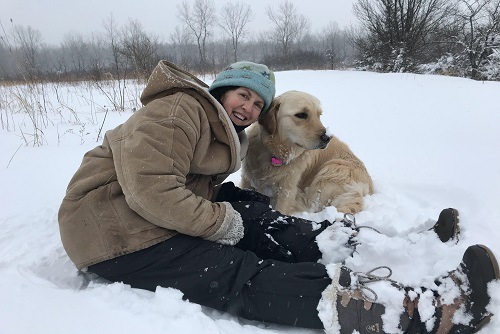As any dog owner knows, the expression ‘you can’t teach an old dog new tricks isn’t precisely accurate. Most older animals can learn many tricks, and some can even undergo drastic changes in behavior if required.
The team here at K9 Reading Buddies Of The North Shore knows that dogs of any age can learn how to become therapy dogs and bring joy to many individuals.
To help dog owners who are unsure of how to train their dog to become a therapy dog, we’ve put together this blog post about what you need to consider and how to get their training underway.
Learn About Therapy Dogs And The Work They Do
Before you begin a training regime, you need to understand what therapy dogs are and how they differ from service dogs.
While service dogs undertake specific tasks, such as guiding their owners across roads and emptying bags, therapy dogs provide comfort and love.
As such, they need to be patient, relaxed, and well-trained. A therapy dog must respond quickly to any command that its owner gives and be affectionate.
Most therapy dogs visit many different facilities, so they also need to be brave and unfazed by new situations and people.
Timid dogs often struggle to complete their roles as therapy dogs, but that doesn’t mean that you can’t teach your dog to become braver and get used to new situations.
Check Out Different Therapy Dog Programs
While most therapy dogs perform the same service and give pastoral support and comfort to people, there are many different programs.
Some therapy dogs visit facilities such as prisons and hospitals and help adults. Alternatively, some therapy dogs can sit and listen as children read books to them and gain confidence in their literary abilities.
At K9 Reading Buddies Of The North Shore, we provide a range of reading programs for children of all ages. Before you consider training your adult dog to become a therapy dog, you should check out the range of programs available and find one that you believe suits you and your pet.
Socialize Your Dog As Much As Possible
While you’re preparing your dog for therapy dog duties, you need to make sure that they’re fully socialized and accustomed to keeping calm in various situations and with lots of types of people.
If your dog isn’t used to being around children, seniors, or other dogs, then take them on visits to friends with kids, your older relatives, and parks where they can meet other dogs.
It would also help if you took your dog to other places, such as superstores, large parks, and train stations. Through this approach, your dog can learn to stay relaxed in many different situations, no matter what new sights, sounds, and smells they encounter.
Train Your Dog Out Of Bad Habits Quickly
Adult dogs can have bad habits, so you must break them as soon as possible before taking your dog to be certified as a therapy dog.
For example, if your pet loves to bark at specific people, or is scared of loud noises, then you need to work with them to break this habit and encourage better behavior.
We advocate working with a professional dog trainer who teaches positive reinforcement training techniques. A professional trainer can help you break any bad habits and make your life easier, as well as improve your dog’s chances of becoming a certified therapy dog.
Teach Your Dog A Signal To Remain Calm
Therapy dogs often encounter stressful situations or people who are struggling to control their emotions. In these instances, you need to make sure that your dog remains calm and that you have complete control over them.
One of the best ways to achieve this is to use the clicker method to teach your dog target training. Using a forward-facing palm, you can signal your dog to focus on you. This is a beneficial behavior that can be taught to dogs of any age and helps keep an older dog’s mind sharp.
To teach your dog this behavior, you should practice at home and then outside in your neighborhood before moving to even more distracting environments. This can be useful to help him safely and calmly get past something that arouses or scares him.
Position your hand with fingers pointing down at nose level. When he sniffs or licks your hand, click and treat from the other hand. Please repeat this step until he bumps your hand with his nose. This shows he now knows he can make a click and treat happen by touching your hand. At this time, you can mark with the word “Touch” right before he actually does it.
After practicing with reliable outcomes, you can move your target hand to have him follow it by backing away from him and saying “Touch.” When he catches up and bumps your hand, click and reward. You can use this movement to have him move to a sit position by your side, spin in a circle, or any other movement-oriented behaviors. Just use your imagination.
Get Your Dog Certified
Before your dog is allowed to join one of our programs, you need to get your pet certified as a therapy dog. Consider working with a leading therapy dog certification organization such as the Alliance Of Therapy Dogs.
The ATD will assess your dog and its relationship with its handler. The Alliance doesn’t care about your dog’s breed, size, or age; temperament and training are more important.
If you use these tips, you should get your dog through the training program and certified as a therapy dog. If your dog fails, you should review whether your dog is suited to therapy dog work.
Align With An Experienced Therapy Dog Organization
If you’re still unsure whether your dog will make a good therapy dog, or you want to find out more about K9 Reading Buddies Of The North Shore, then contact us.
Our team can talk you through how you and your four-legged-friend can volunteer for our organization and help children throughout your local area.



